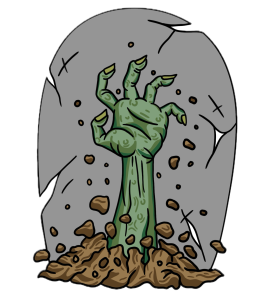“Statues are for heroes”: School clubs rally for removal of Marcus Whitman statue
April 29, 2021

Whitman Teaches The Movement (WTTM) and Indigenous People’s Education and Culture Club (IPECC) held a protest on April 23 to finally remove the Marcus Whitman statue from campus.
The protest focused on the history of the Marcus Whitman statue that sits on the edge of Whitman’s campus. The statue belongs to the city of Walla Walla and has been embroiled in controversy for many years. Pressure to remove the statue, along with one honoring Christopher Columbus, mounted during the second half of 2020.
On Nov. 4, 2020, the Walla Walla Arts Committee recommended changes to how public art can be decommissioned, which were approved by the Walla Walla City Council in January. The changes to the city’s ordinances mandate that an application is required for formal discussion about the removal of the public art to begin. According to Deputy City Manager Elizabeth Chamberlain, the Arts Committee finalized an application for public art deaccession on April 7, and city staffers are currently working on making it available online.
The Washington State Legislature voted to remove a matching Marcus Whitman statue from the National Statuary Hall in Washington D.C. and replace it with one of Billy Frank Jr., a Nisqually tribal member and environmental activist.
About 20 students gathered on Ankeny Field to make posters and use chalk to protest the statue’s presence on campus. WTTM student leader and sophomore Kaitlynne Jensen created a sign with the timeline of the statue’s presence on campus.

Jensen and IPECC leaders sophomore Cheysen Cabuyadao-Sipe and senior Erica Keevama said that they hoped to use the momentum from the removal of the Narcissa Whitman monument, which used to be outside of Prentiss Hall, to get the Marcus Whitman statue removed.
The day after the protest, WTTM sent resources for further action through the student listserv, including a petition to the city council and an email template to President Kathy Murray, encouraging her to make a statement supporting the removal of the statue.
In the past, Jensen said, WTTM has educated students about the statue, but she wanted to take a more active role in advocating for its removal.
“What we try to do is have these difficult but important conversations with students and I think the Marcus Whitman statue is something we have focused a lot on in recent years,” Jensen said. “Last year, we hosted a Continuing the Conversation [discussion] about it and we bring it up a lot in the discussions we have and so I think, for me at least, it was time for us to stop talking and start taking action.”
Cabuyadao-Sipe said that the structure of the event made it a casual way for students to learn about the colonial history of the College. He said that they wanted to keep the protest environment casual because a lot of students are stressed at the end of the semester.
In recent years, the College has made an effort to educate students about Marcus and Narcissa Whitman and their legacy. From 2018 to 2020, the required first-year class, Encounters, included a section about the Whitmans, with a particular focus on the statue. With the switch to the new “Exploring Complex Questions” seminar, education on the Whitmans takes place during orientation events with speakers from IPECC and the Confederated Tribes of the Umatilla Indian Reservation.
Jensen said that she hoped faculty would include more Indigenous issues in their classes in the future.
Sophomore Gillian Brown said that after learning about Marcus Whitman during Encounters, she was uncomfortable with the way the statue glorified his legacy. Brown and other students used chalk to write messages about the statue on the sidewalk outside of the library. Her message said, “Statues are for Heroes.”

“Even when I first came to Whitman and they took us to the monument, I thought ‘this guy is a colonizer, he’s not someone to be celebrated,’ so I guess, really, any opportunity to say ‘hey, I don’t want to be associated with this man anymore’ is a good opportunity,” Brown said.
Junior Alicia Cover said that she thought the statue should be moved to a museum where it can be displayed with more context. The statue’s current plaque, she said, reflects the Whitmans’ legacy in a purely positive light.
“[Deciding what to do with the statue] is really tricky and I am not sure, but I think recontextualization is the most important part,” Cover said.






Robert Freeman • Oct 17, 2021 at 3:47 pm
I guess we’ll have to take a hard look at all those Lewis and Clark monuments all over the West, won’t we? Aren’t they the ones that started this Western Colonization? Or maybe we should reconsider how we think about that rogue Thomas Jefferson, who made the Louisiana purchase from Napoleon. It wasn’t really Napoleon’s to sell, now was it? For that matter, ALL Europeans came to this continent and just moved in. Hey, there were indigenous people here, and we didn’t ask them if we could take their lands.
Skippy • May 31, 2021 at 10:41 pm
Stay Woke Whitman. So impressive…
Scott • Apr 30, 2021 at 12:35 pm
Dismantle the entire Whitman campus. Anyone associated with Whitman College should never visit Whitman mission historical site ever again.
Scott • Apr 30, 2021 at 12:32 pm
Whitman College doesn’t deserve the name Whitman and they also don’t deserve the statue. They need to remove the college name and never visit Whitman mission historical site ever again.
Brian Dohe • Apr 29, 2021 at 3:13 pm
Stop by the bookstore, Earthlight Books, Book & Game, or use your Kindle App to order “Murder at the Mission: A Frontier Killing, Its Legacy of Lies, and the Taking of the American West” by Blaine Harden.
https://www.latimes.com/entertainment-arts/books/story/2021-04-22/unraveling-the-lies-behind-a-murder-and-a-founding-myth-of-the-pacific-northwest